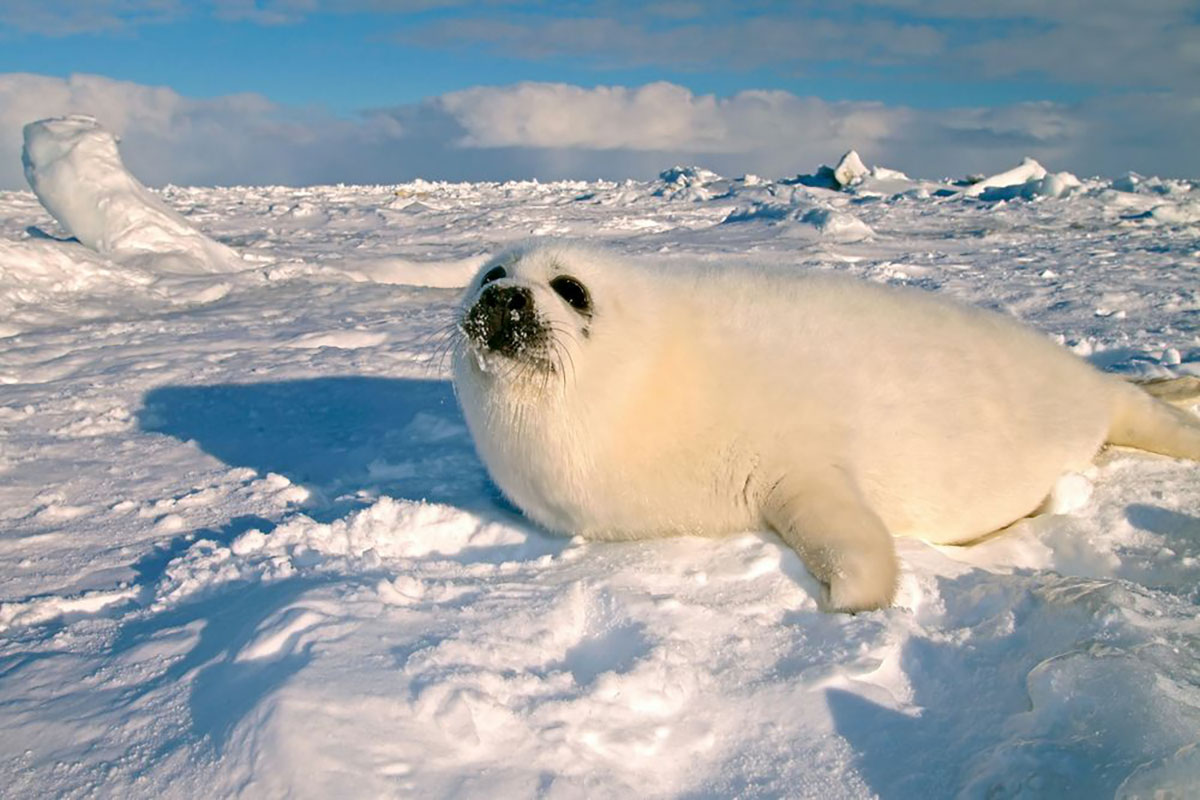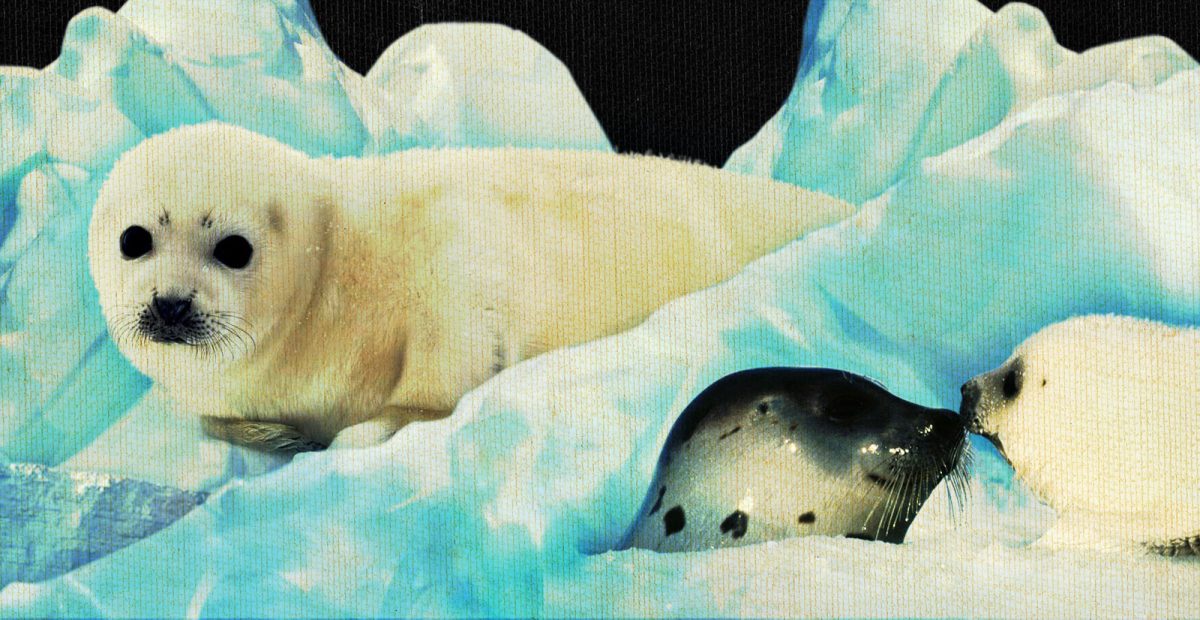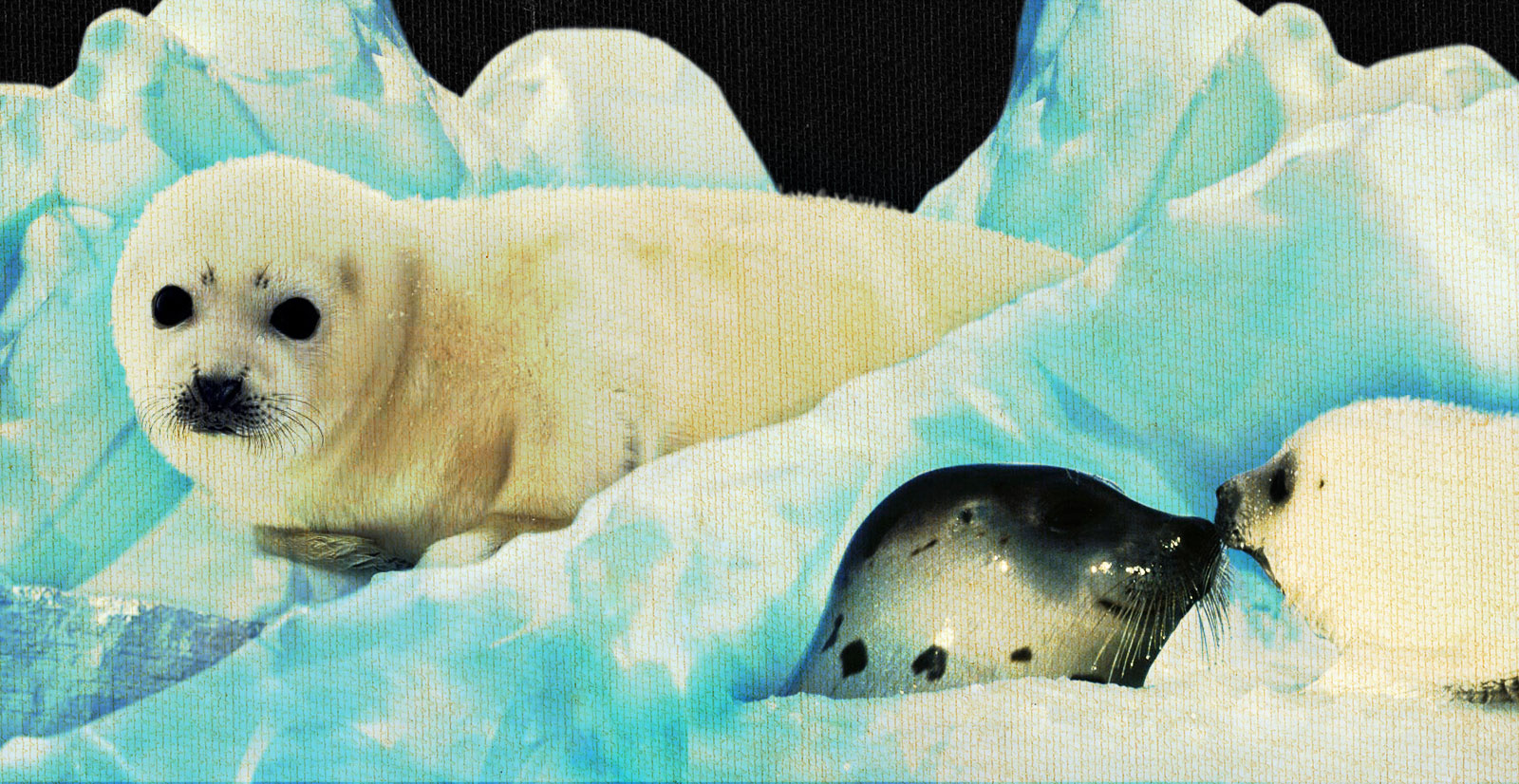
Current Situation
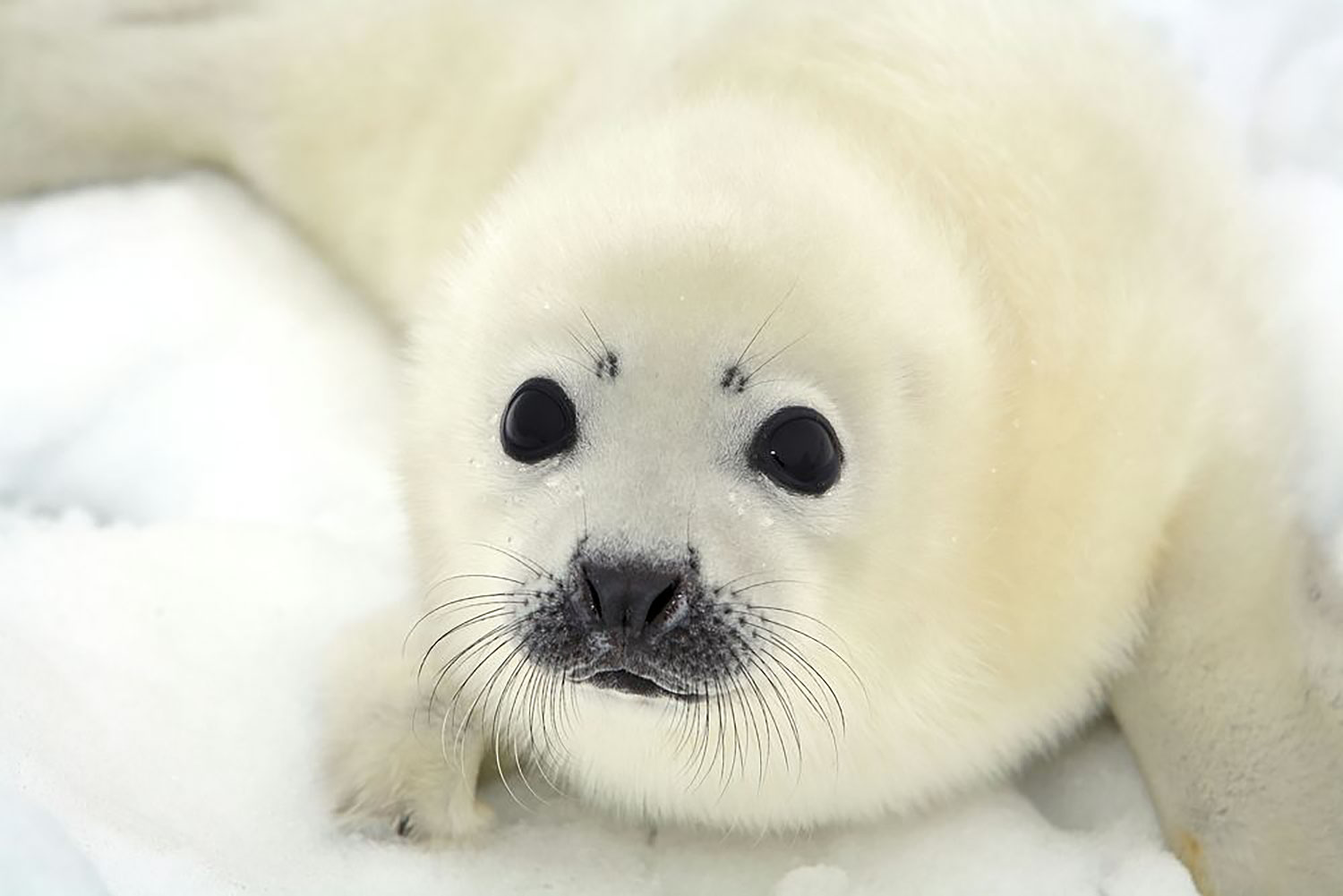
On and around the ice floes of the North Atlantic and Arctic Oceans lives one of the earth’s most adorable animals. Its fluffy white fur and big black eyes have made it one of the most beloved animals on the planet. Sadly, many of these lovable creatures live only a few months before dying a violent death at the hands of a commercial seal hunter. Tens of thousands of harp seals are killed every year, slaughtered for their pelts that will be used in the fur industry.
Traditional Life to Commercial Exploitation

Before the rise of modern technology and the commercial fur trade industry, the harp seal was used for food and clothing for thousands of years by the native Inuits of Canada and Greenland. These people lived in simple, traditional societies and revered the harp seal in their native religions. The smallscale subsistence hunting by the Inuit didn’t affect the massive North Atlantic harp seal population at the time, which was well over 50 million. By the 1700s and 1800s, however, European settlers in Canada began hunting harp seals in vast numbers, exporting millions of barrels of seal oil back to Europe for use as lamp oil and machine lubricants. During the 1800s, more than half a million harp seals in Canada were killed each year. At this time, export companies made millions of dollars selling oil, as harp seal fur wasn’t yet considered a commodity. However, around 1900, harp seal fur coats became fashionable in both North America and Europe. This fashion trend continued until the early 1970s, when the worldwide harp seal population hit an all-time low of 1.5 million.
This fashion trend continued until the early 1970s when the world-wide harp seal population hit an all time low of 1.5 million
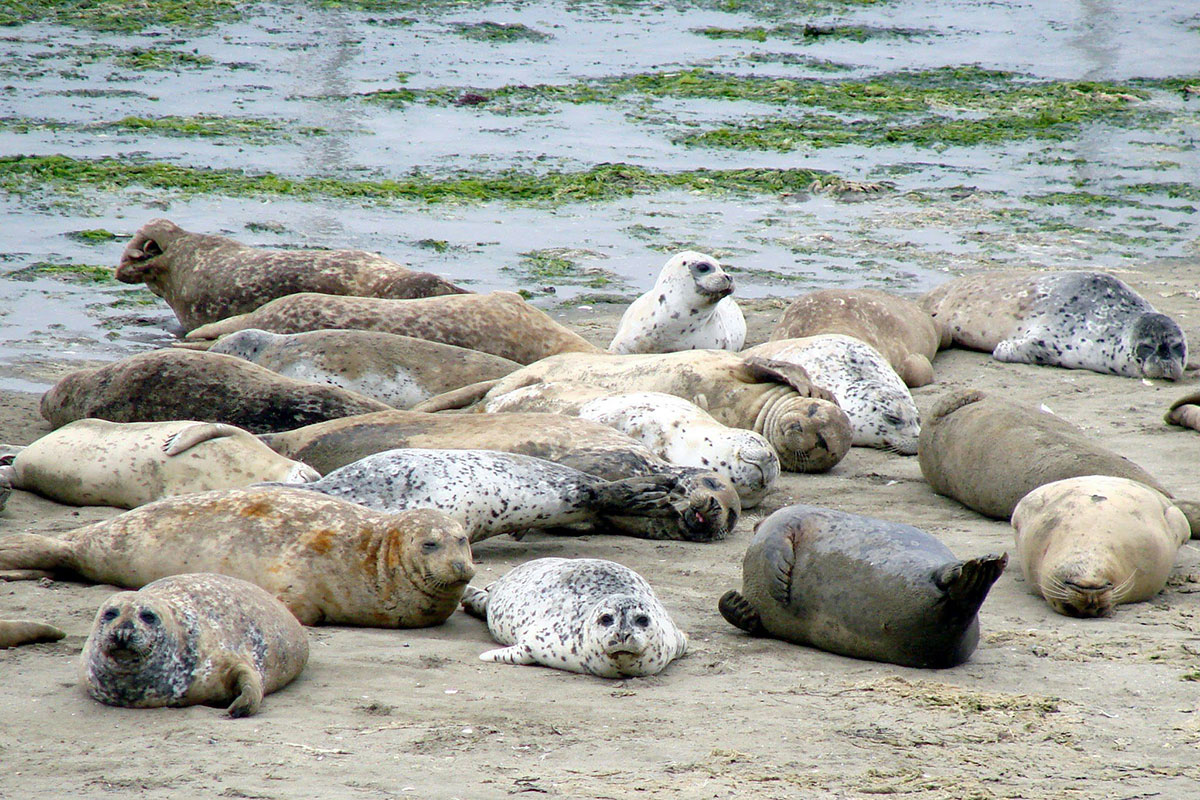
Methods of the Hunt

Though the killing of harp seals takes place in Norway, Iceland, and Greenland, the vast majority of seals killed each year are in Canada. Every year during the months of March and April, about a thousand Canadian fishermen and seal hunters invade the ice floes of Newfoundland and the Gulf of St. Lawrence and proceed to club, shoot, and skin tens of thousands of baby harp seals who have been alive for no more than four months. The hunters approach the defenseless baby seals on the ice and either shoot them with guns or club them with ‘hakapiks’ – long, slender clubs with hooked metal blades attached to one end. By Canadian law, the pups are required to be dead for a minimum of one minute before being skinned. However, there is ample video evidence supplied by the Humane Society International and other animal rights organizations that shows baby seals are often being skinned while breathing and fully conscious.
The defenseless baby seals are approached on the ice by the hunters who either shoot them with a gun or club them
After being skinned, the harp seal carcasses are dumped on the ice and left behind. Every year, thousands of baby seals, after being shot or clubbed, escape into the ocean before the hunters can skin them, where they eventually drown or bleed to death. These seals are referred to as “struck and lost” by the Canadian government and aren’t counted in the annual number of seals killed. If these undocumented victims were included, the number would increase an additional 510%.
After being skinned, the harp seal carcasses are dumped on the ice and left behind. Every year, thousands of baby seals, after being shot or clubbed, escape into the ocean before the hunters can skin them, where they eventually drown or bleed to death. These seals are referred to as “struck and lost” by the Canadian government and aren’t counted in the annual number of seals killed. If these undocumented victims were included, the number would increase an additional 510%.
Once the harp seals are killed and skinned, the pelts are then sold by the hunters to a pelt processing plant, the primary Canadian one being the Carino Company Ltd, which is based in Newfoundland. After the pelts are processed they are purchased by international fashion brands, who make them into fur coats that are sold throughout the world.
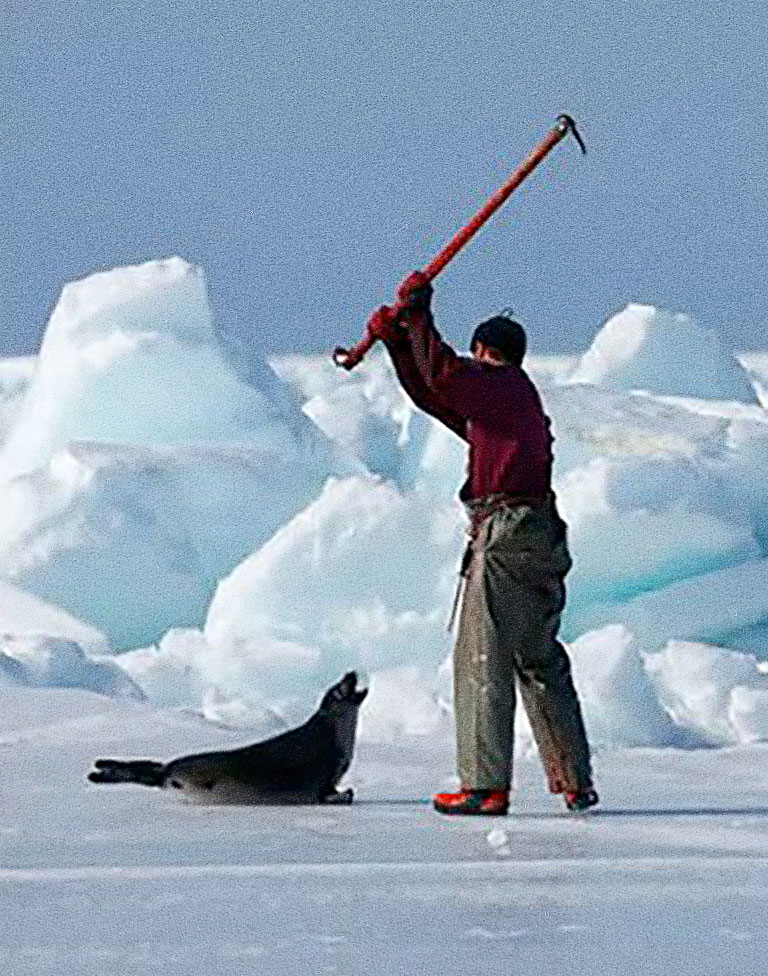
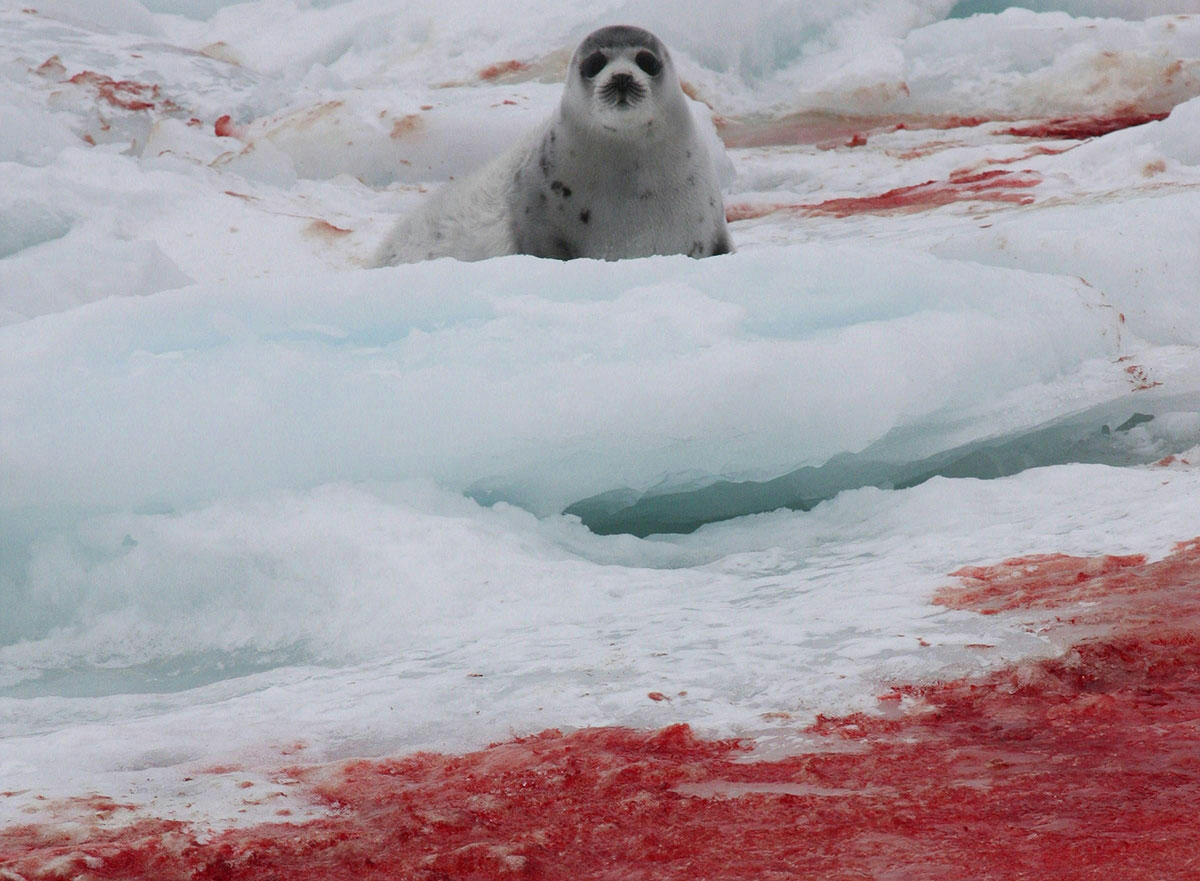
By the Numbers

The MarineBio Conservation Society estimates that the number of harp seals killed each year in Canada is underreported by 3889%. This is staggering, given the already massive number of officially reported kills. According to Canadian governmental records, from 1950-82 an average of a quarter million harp seals were killed each year in Canada. This ruthless slaughter eventually caught up to the Canadian sealing industry as the world-wide harp seal population dropped to a new low of 1.5 million, and European and American public outcry over the brutal killings reached unprecedented heights. In 1983, Europe banned all whitecoat pelt imports, and a British boycott of Canadian seafood in 198485 in protest of the seal slaughter further damaged the industry’s reputation. As a result, from 1983 through 1995, the number of harp seals killed in Canada dropped to just over 50,000 a year. The industry was close to being destroyed for good until the Canadian government stepped in and began spending millions of dollars, developing new markets in China and the Far East. The new demand resulted in a sharp increase in harp seal killing. From 1996 through 2007, the number killed spiked back up to 264,000 a year.
Fortunately, the last six years has seen a decrease in killing. A cooling off of the Asian markets and bans on the import and sale of harp seal products in the European Union and Russia has resulted in a reduction of annual harp seal kills. The average number in Canada during this time period has dropped to 32,000 a year.
From 1950-1982 an average of a quarter million harp seals were killed each year in Canada
The Future of Sealing

Public condemnation of sealing over the last three decades has severely weakened this once strong commercial industry. Thanks to the hard work of animal rights activists and volunteers, most people in the Western world know about the horrors of this cruel industry. However, a sealing resurgence, like the one that occurred between 1996-2008, is very possible over the next decade with the Canadian government lobbying hard to open up and sustain new markets in Asia. To avoid this, continued pressure must be applied to the Canadian government, demanding an end to this cruel and dying industry once and for all.
Continued pressure must be applied to the Canadian government, demanding an end to this cruel and dying industry once and for all
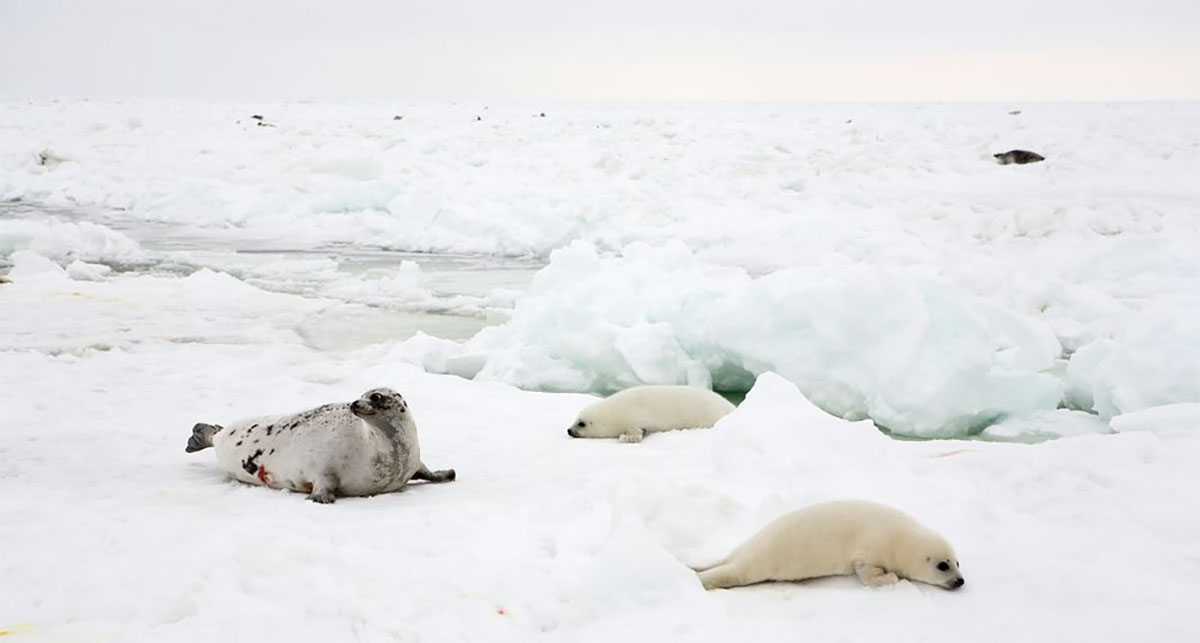

Positive Change
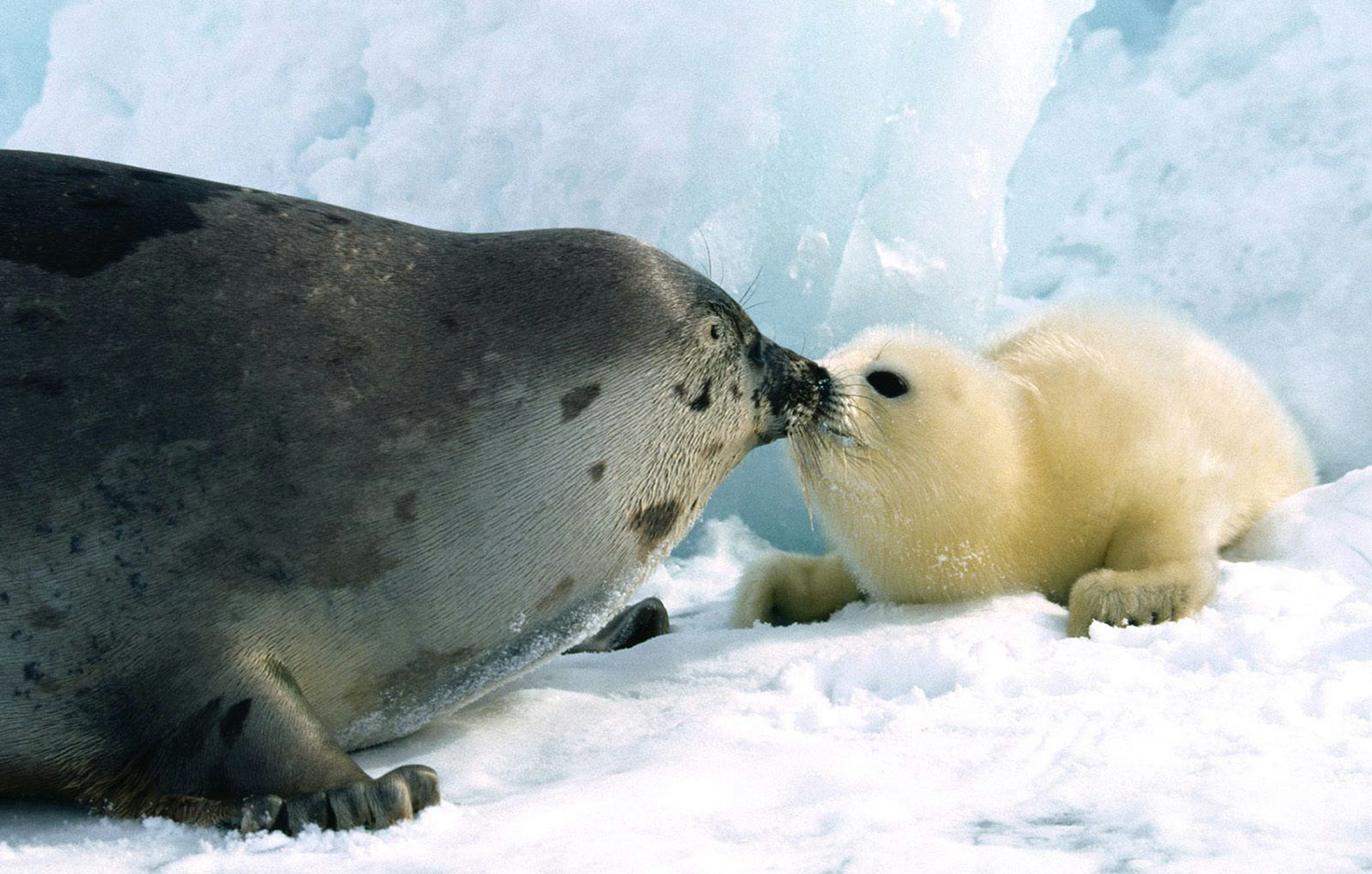
Since the widespread killing of harp seals began in Canada in the early 1700s, hundreds of millions of these beautiful creatures have been brutally slaughtered. The commercial killing of harp seals began in order to extract the oil contained in the seals’ fatty blubber, which was used as lamp oil and machine lubricant. But by the 1900s, the slaughter was being carried out almost entirely for the use of baby harp seal pelts (called whitecoats) in the fur industry. The annual massacre continued virtually unnoticed by the public until the late 1960s and early 1970s when different animal rights organizations like the International Foundation for Animal Welfare, Greenpeace, and Sea Shepherd began exposing the horrific industry to the outside world. These groups’ relentless work resulted in the United States banning imports of all harp seal and marine mammal products in 1972 with the passage of the Marine Mammal Protection Act.
Despite this victory, European demand for seal products kept the Canadian commercial sealing industry strong and very profitable. Public anger in Europe concerning the killing methods involved in the sealing industry, however, grew steadily throughout the 70s and into the 80s. Famous celebrities, including Brigitte Bardot and Loretta Swit, spoke out against the slaughter and recruited tens of thousands to the movement. The animal rights groups’ and activists’ tireless efforts paid off again in 1983 when the European Economic Commission banned all Canadian whitecoat pelt imports.
The Marine Mammal Protection Act and European Economic Commission whitecoat ban were the first of many severe blows to the Canadian sealing industry
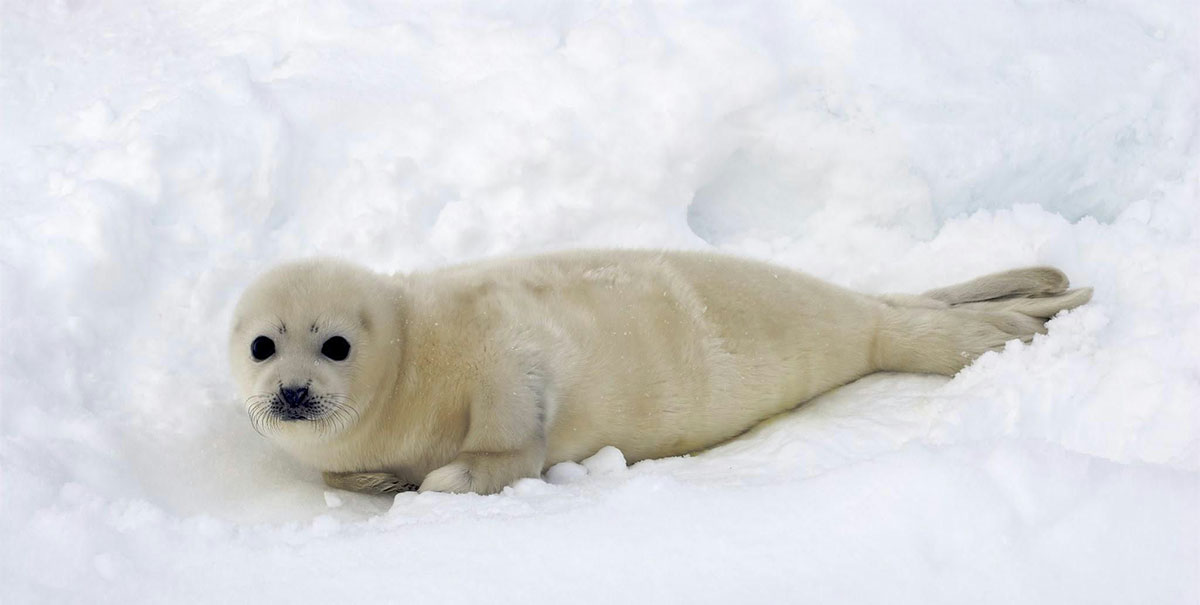
The Marine Mammal Protection Act and European Economic Commission whitecoat ban were the first of many severe blows to the Canadian sealing industry. Despite a brief resurgence from 1996-2008, further strides over the last 15 years have greatly weakened the cruel trade. Celebrities continue to speak out against it. In 2014, Ellen Degeneres, a strong opponent of the sealing and fur industries, donated over half a million dollars to the Humane Society of United States to continue their effort to end Canadian commercial sealing and promote animal rights. Famous actors such as Jude Law, Kim Basinger, Pierce Brosnan, Emily Deschanel, and Ed Begley Jr. have all publicly denounced the killing of harp seals, as have famous musicians Paul McCartney, Morrissey, Red Hot Chilli Peppers, Ke$ha, and Iggy Pop.
European Union ban on seal products

Another huge blow to the Canadian sealing industry came in 2009 when the European Union expanded the whitecoat pelt import ban of 1983 to include all seal products, from seals of any age and species. The official text of the document declared that commercial seal hunting, notably in Canada, is “inherently inhumane”. The ban applies to all products and processed goods derived from seals, including pelts, meat, oil blubber, organs and even omega-3 pills made from seal oil. In 2013 a European Union court upheld the ban, rejecting an appeal by Canada and Greenland. The World Trade Organization then rejected another campaign led by Canada in May of 2014, stating that concerns about animal welfare override commercial interests, and that the European Union’s ban on seal products is necessary to protect generally held European public morals concerning the issue. And, finally, in September of 2015, The European Union overwhelmingly voted to strengthen the ban and increase restrictions to the exemptions enjoyed by the Inuit, with particular attention to upping welfare standards. The significance of the European Union ban on seal products cannot be overstated. It took away the biggest buyer of Canadian seal products and sent a very clear message to Canada that commercially exploiting seals is deplorable and no longer socially acceptable.
The significance of the European Union ban on seal products cannot be overstated
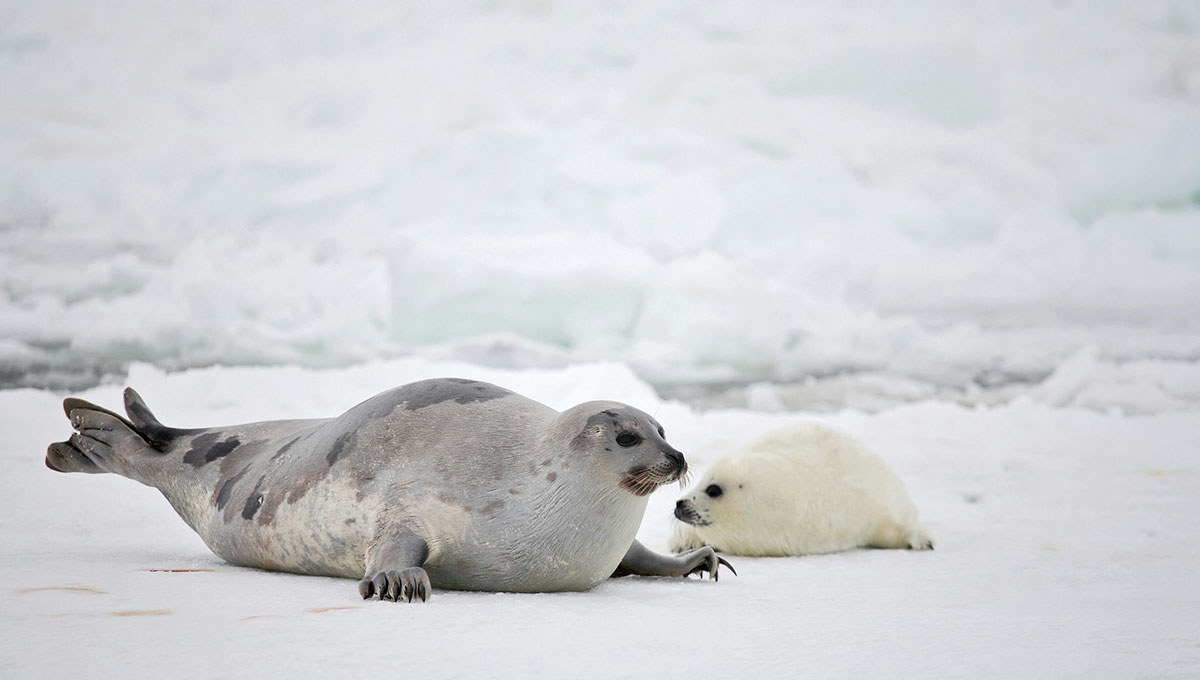
Russian ban on sealing and harp seal imports

In 2008 the International Federation of Animal Welfare delivered petitions signed by nearly 400,000 people to the Russian government, asking for an end to the Russian commercial seal hunt. In March of 2009 the Russian government responded to both this and protests throughout the country by officially outlawing the killing of seals under one year of age, which effectively ended the Russian commercial harp seal hunt. Russia’s Minister of Natural Resources Yury Trutnev called the action “a serious step towards the conservation of biodiversity in Russia. The bloody seal slaughter—the killing of the defenseless animals—can’t be even called a hunt. It is now prohibited in Russia as it is in most developed countries.”
In December of 2011 the Russian government took it a step further by completely banning the import and export of all harp seal skins and outlawing any trade involving seal skins. The governments of Belarus and Kazakhstan followed suit the next year and enacted identical bans. In 2013 the government of Taiwan also banned the import of harp seal skins.
The Russian ban was another massive blow to the Canadian sealing industry. Russia had become the main importer of Canadian seal skins after the European Union ban had taken effect in 2009. About 90% of Canadian harp seal pelts exported in 2011 had gone to Russia. The Russian and European Union bans took away the Canadian commercial sealing industry’s two biggest customers.
The Russian and European Union bans took away the Canadian commercial sealing industry’s two biggest customers
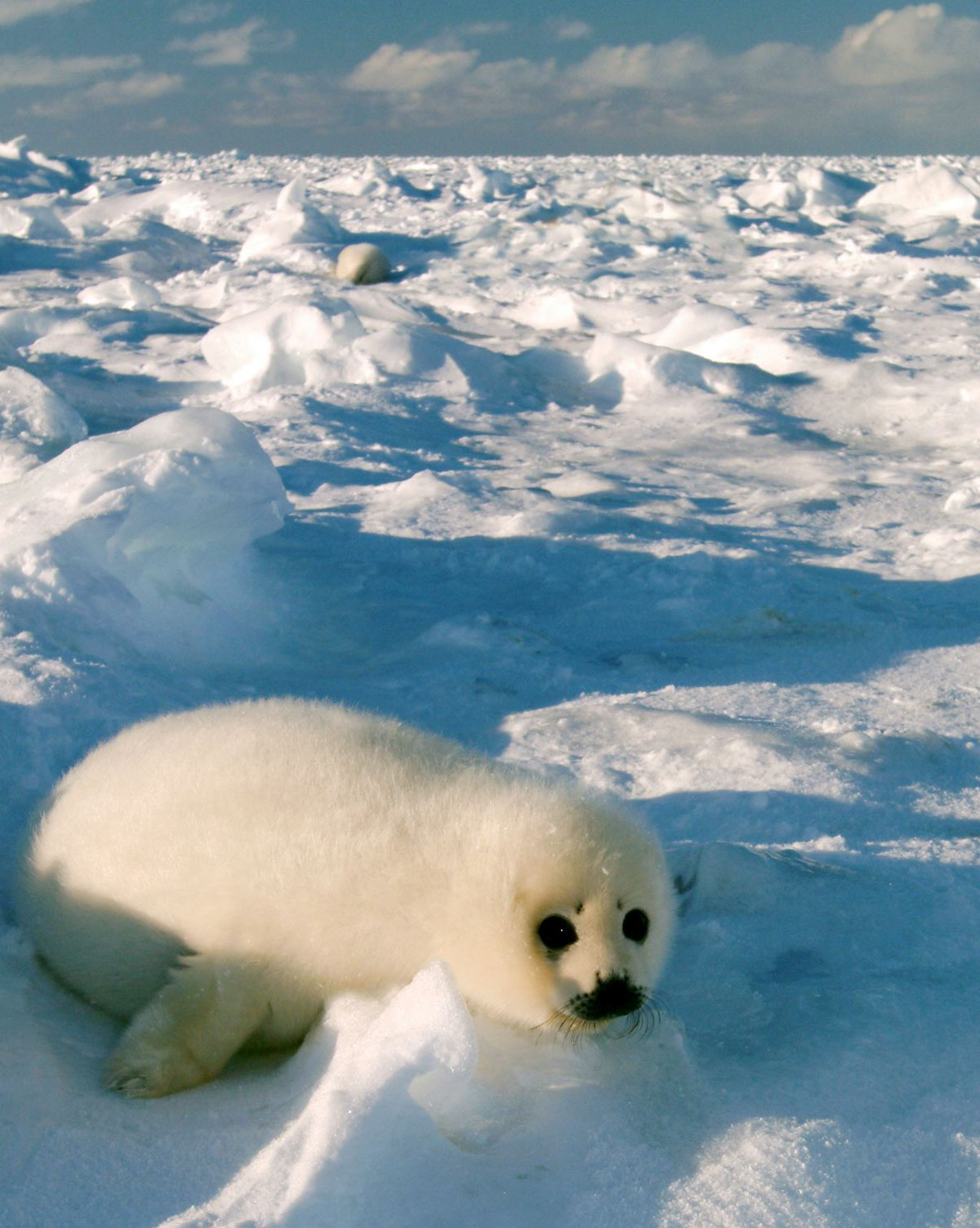
Norway cuts commercial seal hunt subsidies

In December 2014, the Norwegian government cut out the entire $1.8 million annual commercial seal hunt subsidy from the 2015 federal budget. This massive hit to the Norwegian sealing industry, where the subsidy covered some 80 percent of the industry’s revenue, effectively ends what amounted to each hunter being paid $187 for every harp seal killed. Many business analysts believe this will essentially end the Norwegian commercial sealing industry and send a strong message to Canada that the industry as a whole is on the wane. Due to decreased world-wide demand for seal products, the number of seals killed in Norway over the last decade had been almost cut in half from over 20,000 in 2005 to just under 12,000 in 2014.
Last ditch effort by the sealing industry

Despite the great strides made over the last 45 years, the cruel Canadian sealing industry has not been totally put to rest. Innocent young harp seals are still being killed off the east coast of Canada. And now that the market for seal products has all but dried up in North America and Europe, the Canadian government is desperately spending taxpayers’ money, trying to build seal pelt and meat markets in Asia, particularly in China. Thus far, for the most part, China has resisted. A trade agreement announced in 2011 between Canada and China to sell Canadian seal meat has stalled. The Canadian Federal Fisheries Minister has admitted that both Western and Chinese animal rights activists have thwarted the deal by putting pressure on the Chinese government, which has called for a review of the agreement and has indefinitely delayed any decision.
The only way to end the Canadian sealing industry is through continued education and increased public outcry. With so many victories in the last decade, now is the time to put an end to this horrific industry once and for all.
With so many victories in the last decade, now is the time to put an end to this horrific industry once and for all
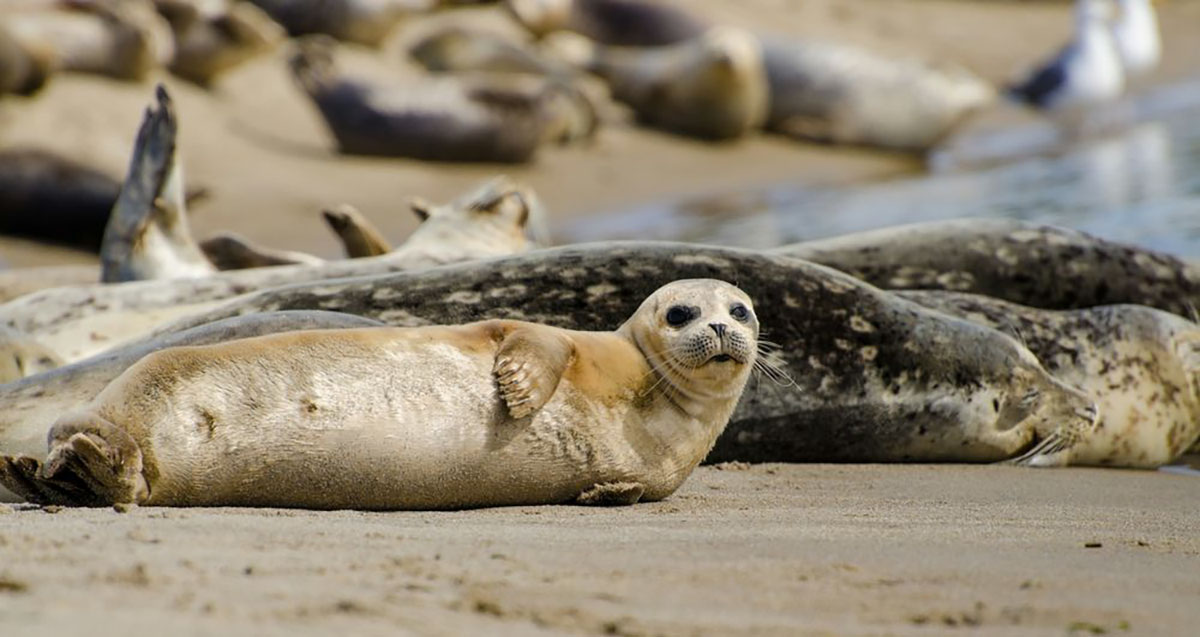

Action
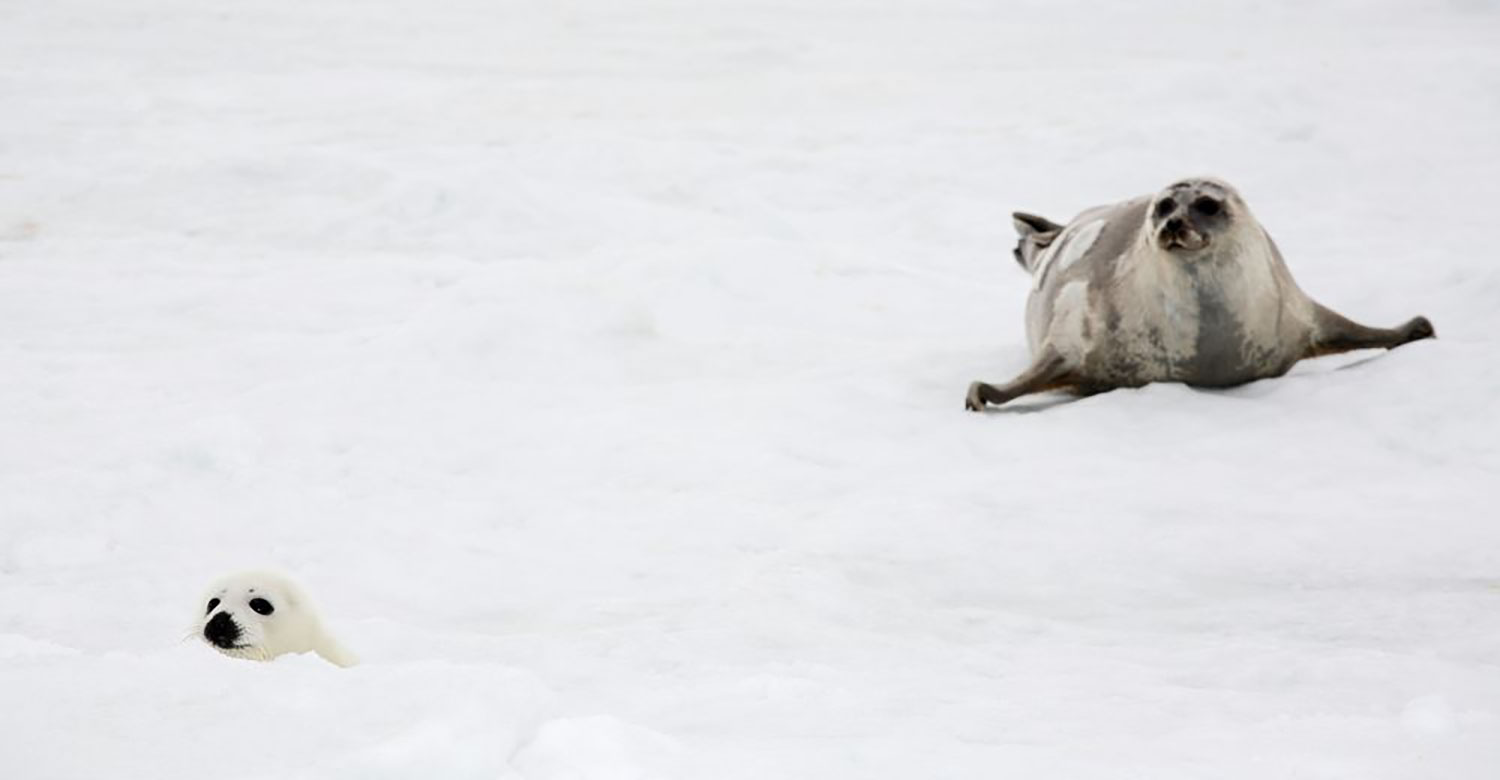
Up until the 1960s the mass killing of baby harp seals was all but unknown to the outside world, but through the tireless efforts of numerous animal rights groups and activists, the world now knows about the millions killed in this barbaric slaughter. Huge changes have been made in the last 45 years, and North American and European condemnation has reduced the industry to a shadow of its former self.
The Canadian sealing industry, however, is currently trying to develop new markets in Asia for harp seal meat and fur. A revival of mass harp seal killing in Canada is a very real possibility—in the mid-1990s the sealing industry was at an all-time low when it came roaring back and embarked upon a twelve year span of near high annual harp seal kills. Moreover, the Canadian government is still subsidizing and actively promoting harp seal products in countries where no bans or boycotts exist, and sealing industry lobbyists are trying to weaken the European Union ban. Continuing worldwide education of the horrors of the sealing industry and keeping the demand for seal products low, particularly in Asia, is of vital importance in convincing the Canadian government to drop its support of the industry once and for all. Only when the Canadian government stops promoting harp seal products will the Canadian sealing industry close its doors for good.
You are the voice for these animals who cannot speak for themselves. Educating friends and family about the sealing industry and supporting organizations that are committed to ending the slaughter is vital
You are the voice for these animals who cannot speak for themselves. Educating friends and family about the sealing industry and supporting organizations that are committed to ending the slaughter is vital.
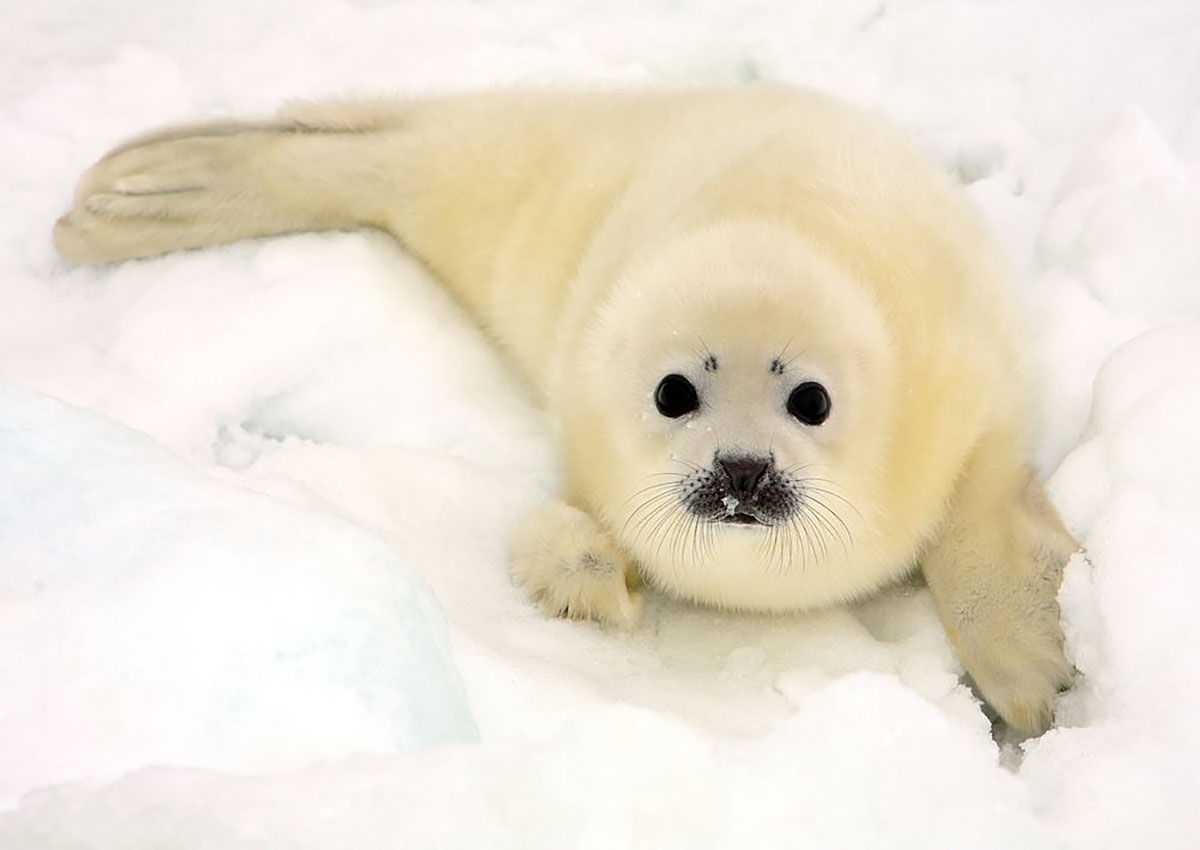
Join the HarpSeals.org Seal Action Team

The most comprehensive resource concerning harp seals is HarpSeals.org. No other site has as much educational and relevant information concerning harp seals, the sealing industry, and news affecting the campaign to end the slaughter. The Seal Action Team keeps you up-to-date on the most recent developments and the different ways that you can help and keeps you informed of upcoming events in your area. It is one of the easiest ways to actively help in the world-wide movement to end sealing. Click here to become a member.
Support organizations that are actively are working to end the Canadian sealing industry

Humane Society International Canada
The Humane Society International Canada (HSI-Canada) is at the forefront of protecting Canadian harp seals. Working in tandem with the United States Humane Society and the Humane Society International, the efforts of HSI-Canada have been instrumental in recent victories against the sealing industry. Their “Protect Seals Team” focuses exclusively on ending the Canadian commercial sealing industry. HSI-Canada actively promotes a worldwide boycott of Canadian seafood and was integral in helping facilitate the European and Russian bans on seal products. Every year HSI-Canada monitors sealing boats via helicopter and films the hunters’ activity. The helicopter’s presence alone acts as a deterrent and has saved the lives of many harp seals, as many hunting crews are wary of being filmed while slaughtering the seals. HSI-Canada is currently urging Canadian Prime Minister Stephen Harper to shut down the sealing industry for good with a federal buyout of the hunters. In the buyout plan the sealers would be compensated for their licenses, and the funds now being used to promote seal products in other countries would instead be invested in economic alternatives for the Canadian hunting communities involved. Visit the Humane Society International Canada Protect Seals website and help sustain their work with a financial donation to the Protect Seals Team.
International Federation of Animal Welfare (IFAW)
The International Fund for Animal Welfare (IFAW) was founded by a small group of animal activists in New Brunswick in 1969 to stop the commercial hunt for harp seals in Canada. With offices now in over a dozen countries, IFAW is one of the largest animal welfare organizations in the world and is still very active in ending the Canadian sealing industry. Part of the IFAW strategy is conducting research to provide the public with scientific data that disproves the sealing industry’s claims. This research has shown that most harp seals killed with a blow to the head from a hakapik suffer greatly before their deaths, contrary to claims by the sealing industry. Other research has revealed that harp seals are not responsible for the decline in the Atlantic cod population as the sealing industry asserts. (The cause is decades of excessive harvesting by the Atlantic fishing industry.) Along with the Humane Society International Canada, IFAW was instrumental in convincing the European Union in 2009 to ban all seal products. In 2013, IFAW played a pivotal role at the World Trade Organization by successfully helping the European Union defend the ban against a strong Canadian legal challenge. Check out the IFAW webpage, Saving Seals, to see more about how IFAW is working on the behalf of Canadian seals. Click here to make a financial donation.
Sea Shepherd
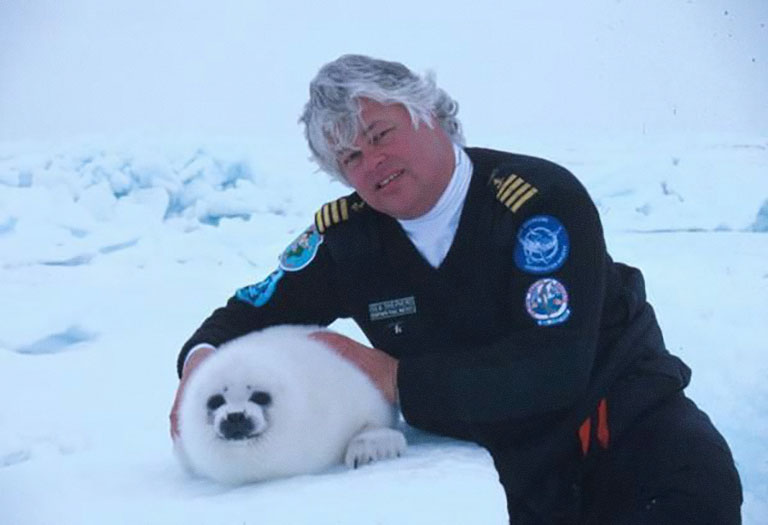
The first ever direct action undertaken by Sea Shepherd was against Canadian harp seal hunters in the Gulf of St. Lawrence in March 1979. Today, Sea Shepherd is still extremely active in bringing an end to sealing, just as they have been over the last 35 years. The Sea Shepherd website suggests ways you can make a difference and help end the sealing industry, including a list of addresses, websites, emails, and telephone numbers of retailers who sell harp seal products. To make a donation to Sea Shepherd, click here.
The first ever direct action undertaken by Sea Shepherd was against Canadian harp seal hunters in the Gulf of St. Lawrence in March 1979
Post info about the sealing industry on facebook and other social media sites

Humane Society International Canada, IFAW, Sea Shepherd and other harp seal advocacy organizations have Facebook and Twitter accounts. Follow their pages and share photos and posts with your friends and family. Educate and keep them up-to-date on harp seal news and issues surrounding other marine mammals.
Boycott Canadian seafood

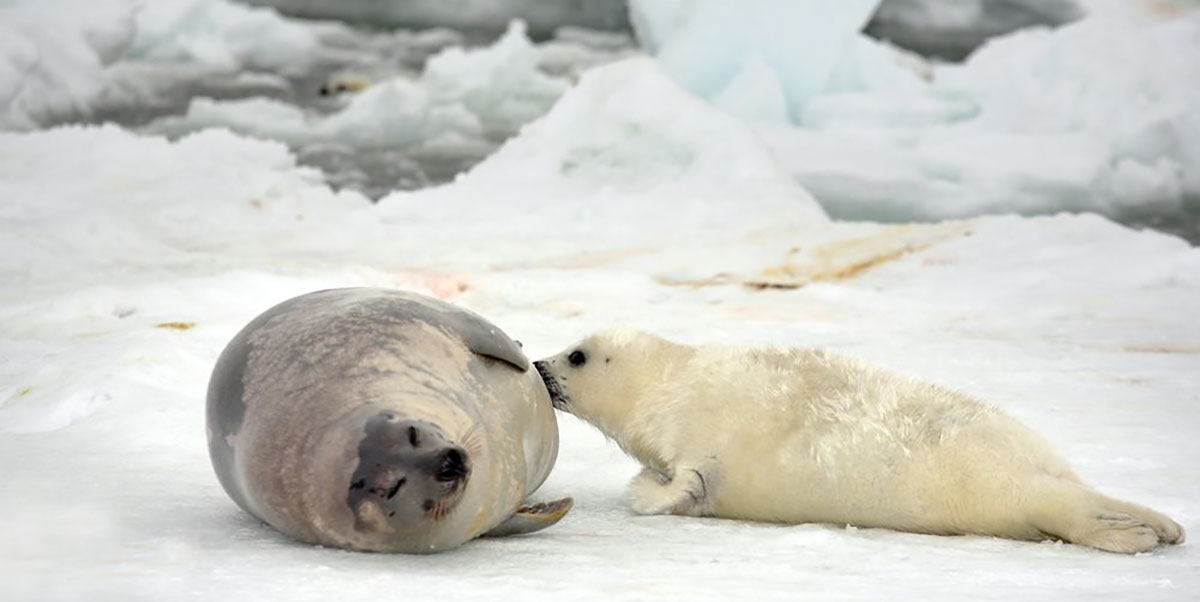
By urging those that consume seafood to boycott Canadian seafood, the Canadian sealing industry will be greatly impacted and eventually forced to close down for good
In 1983, the European Economic Commission banned the import of Canadian whitecoat pelts. A year later, Britain followed suit with a boycott of Canadian seafood. Due to the crippling economic effect of these two actions, the Canadian government was forced to ban the killing of all whitecoat harp seal pups in 1987. Currently, there is a strong grass roots American movement that is trying to force the government of Canada to completely end the cruel harp sealing industry by boycotting Canadian seafood. The Canadian Seafood Boycott is a concerted effort by different animal rights organizations including the United States Humane Society, Sea Shepherd, Harpseals.org, and Humane Society International. Currently, more than 6,500 restaurants and supermarkets in the United States have joined the boycott. An acclaimed group of chefs called “Chefs for Seals”, has also joined. Harpseals.org Boycott Canadian Seafood webpage give fantastic tips and guidelines to effectively implement the seafood boycott in your community. Eileen Densel, The HSUS’s Protect Seals Coordinator, can also be a big help in starting the boycott in your community. She can be reached by email – edensel@humanesociety.org.
By urging those who consume seafood to boycott Canadian seafood, the Canadian sealing industry will be greatly impacted and eventually forced to close down for good. Contact your local grocery stores and seafood restaurants and ask them to join the global effort today. You can also contact influential members of the Canadian government and let them know how you feel about the Canadian sealing industry. The government official with the most legislative power to bring an end to the sealing industry is the Canadian Prime Minister, Justin Trudeau. Mr. Trudeau can be contacted by visiting the official Prime Minister of Canada webpage.
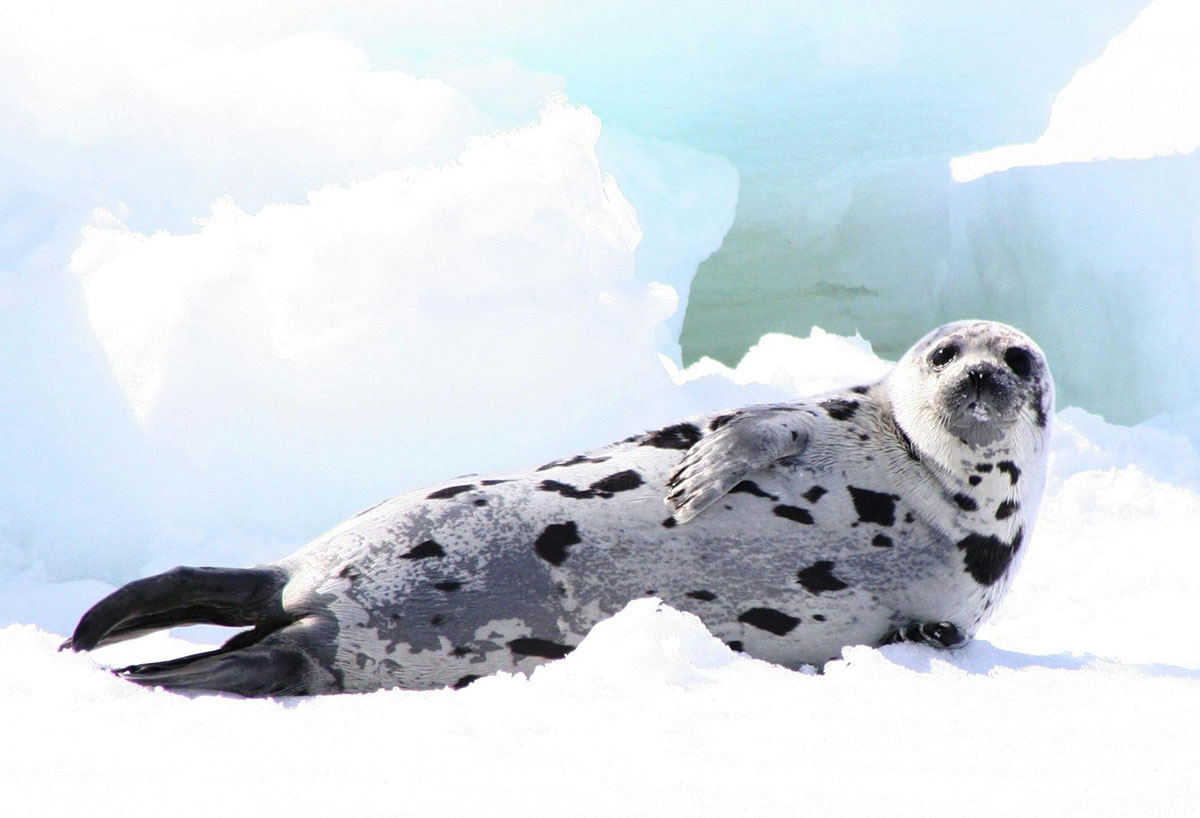
Alternatives to the Sealing Industry

On average, only 5% of a sealer’s annual income is derived from sealing. 95% of his livelihood is from fishing during the summer and autumn months. Nevertheless, sealers have alternatives to sealing, such as seal brushing and ecotourism. Seal brushing is the trade of brushing harp seal pups as their white fur is naturally molting, resulting in an abundance of soft hair used for bedding and other applications. The white hair of harp seal pup fur is warmer than the hair of other mammals because it is thick and hollow, acting as a superior natural insulation. Seal brushing is harmless to the baby seal. Sea Shepherd has attempted on multiple occasions to introduce this idea to the Canadian sealers. Paul Watson even agreed to terms with a businessman who offered more money for each brushed seal than the sealers could make from a pelt. Thus far, the idea has been rejected by the sealers every time.
Sealers have alternatives to sealing, such as seal brushing and ecotourism
Another alternative for the sealers is ecotourism. Paul McCartney and many others have championed the economic potential of ecotourism in the Canadian Atlantic region, as it is considered one of the most scenic areas in the world. Up and down the North Atlantic Canadian coasts, families can make their entire livelihood from marine ecotourism, operating bed and breakfasts and giving tours of the surrounding environs. Some forwardthinking sealers have already begun to make money this way. In the long run, ecotourism is a much more profitable endeavor than the meager income provided by the languishing value of seal pelts.
The annual Namibian Cape fur seal slaughter

Each year, on the other side of the world from Canada, in southern Africa, the government of Namibia authorizes the killing of 80,000 to 85,000 Cape fur seal pups for their pelts and 6,000 Cape fur seal bulls for their genitals, which are considered aphrodisiacs in different parts of Asia. During this annual massacre that takes place daily from July to October, nursing Cape fur seal pups are separated from their mothers and clubbed and stabbed to death by a few dozen hunters. Namibian government officials have admitted that the major reason for the slaughter is not the pelts. It is to placate the Namibian fishing industry which is dominated by wealthy Spanish seafood corporations. These fishing corporations consider the seals as direct competition for the different fish species off the Namibian coast. Sea Shepherd and other marine mammal advocacy organizations are actively trying to stop this horrific slaughter and bring it to the attention of the rest of the world. To find out more about the annual Namibian seal slaughter and what you can do to stop it, visit the Harpseals.org Namibian Cape fur seal webpage.
Nursing Cape fur seal pups are separated from their mothers and clubbed and stabbed to death by a few dozen hunters
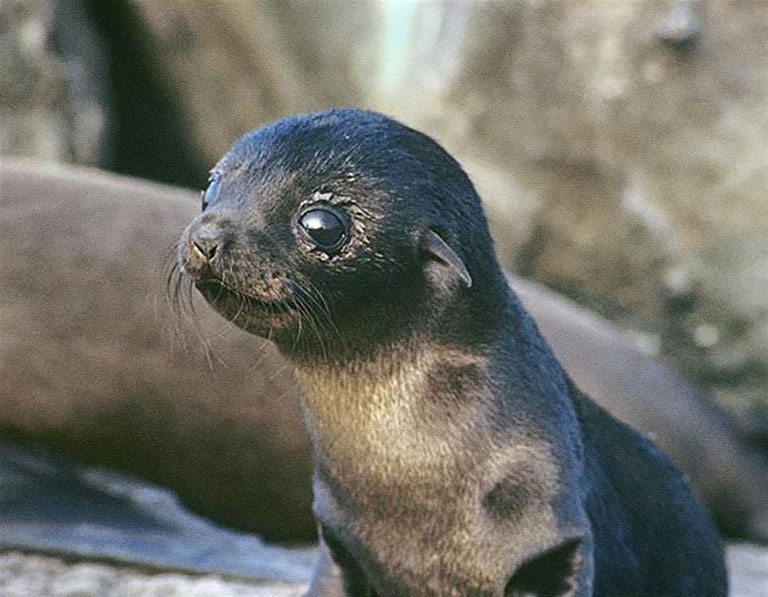

Facts
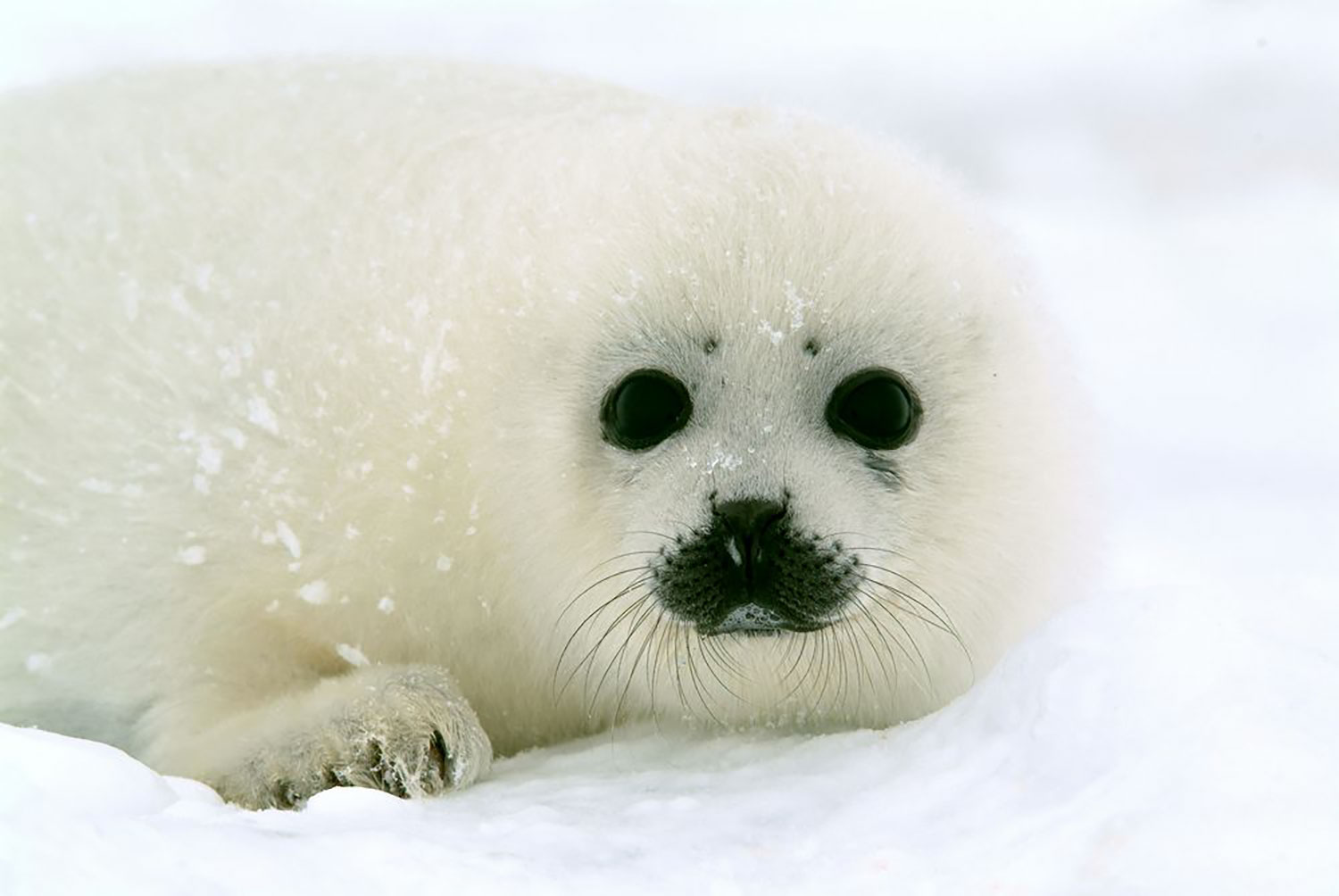
The harp seal is a marine mammal that is native to the northern Atlantic and southern Arctic Oceans. They live off the coasts of Canada, Greenland, Iceland, Norway, and Russia. The largest population of harp seals breeds and spends most of its time off the eastern coast of Canada.
Adult harp seals grow, on average, up to six feet or longer, and weigh approximately 400 pounds. At birth, they are just under three feet long and weigh about 25 pounds. They are born with long, soft, yellowish fur that turns pure white after a couple of days. After twelve days, the fur begins to darken to a greyish or tan color. Harp seals are known for their acute vision. The large lens and mobile pupil of their expressive black eyes enable them to see in both darkness and bright light. Large claws on their strong front flippers pull them along the ground when on ice or land. Adult harp seals have a horseshoeshaped black saddle or “harp” on their backs, hence their name. They can live upwards of 35 years.
Harp seals are renowned for their stamina and are known to swim over 2,500 miles during the course of a year. They can dive as deep as 1,500 feet and stay underwater up to 15 minutes. During the summer months, harp seals swim to their annual feeding grounds in Arctic waters then return to the southern boundaries of their range during the winter. The typical breeding season for harp seals is between mid-February and late March. Infant harp seals are born on top of the ice, and mothers identify their own pups from the multitude of others by their individual smell.
Each year, the governments of Canada, Norway, Iceland, and Greenland allow hunters (mostly fisherman not working during the winter months) to kill tens of thousands of baby harp seals. Approximately 95% of all seals that are killed are between three weeks and three months old, before their coats have completely changed color.
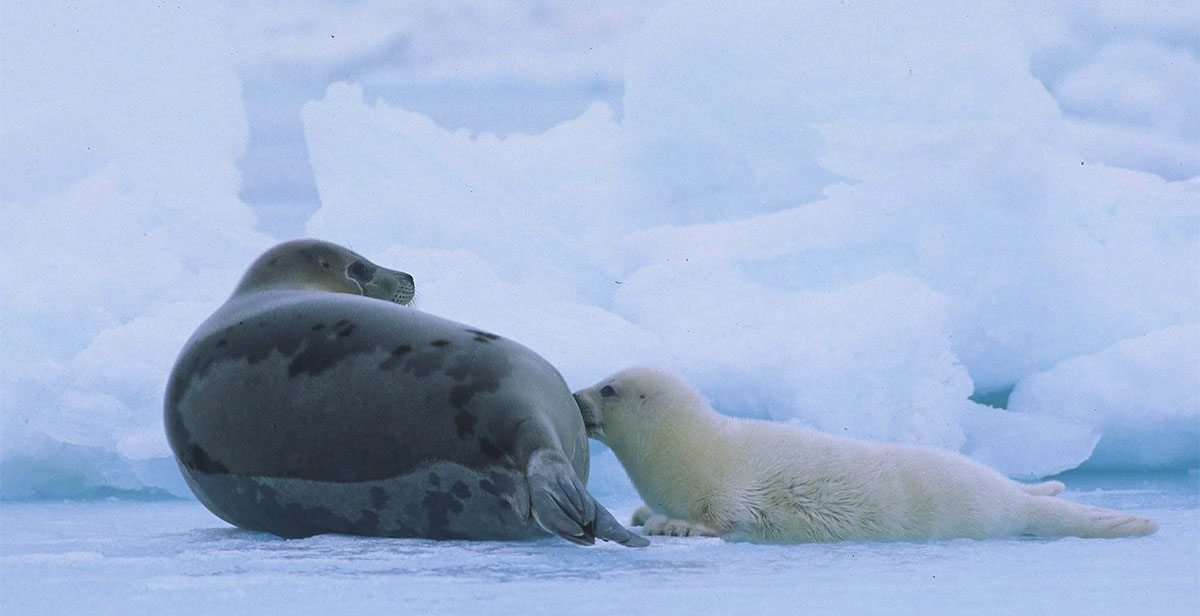

Explore
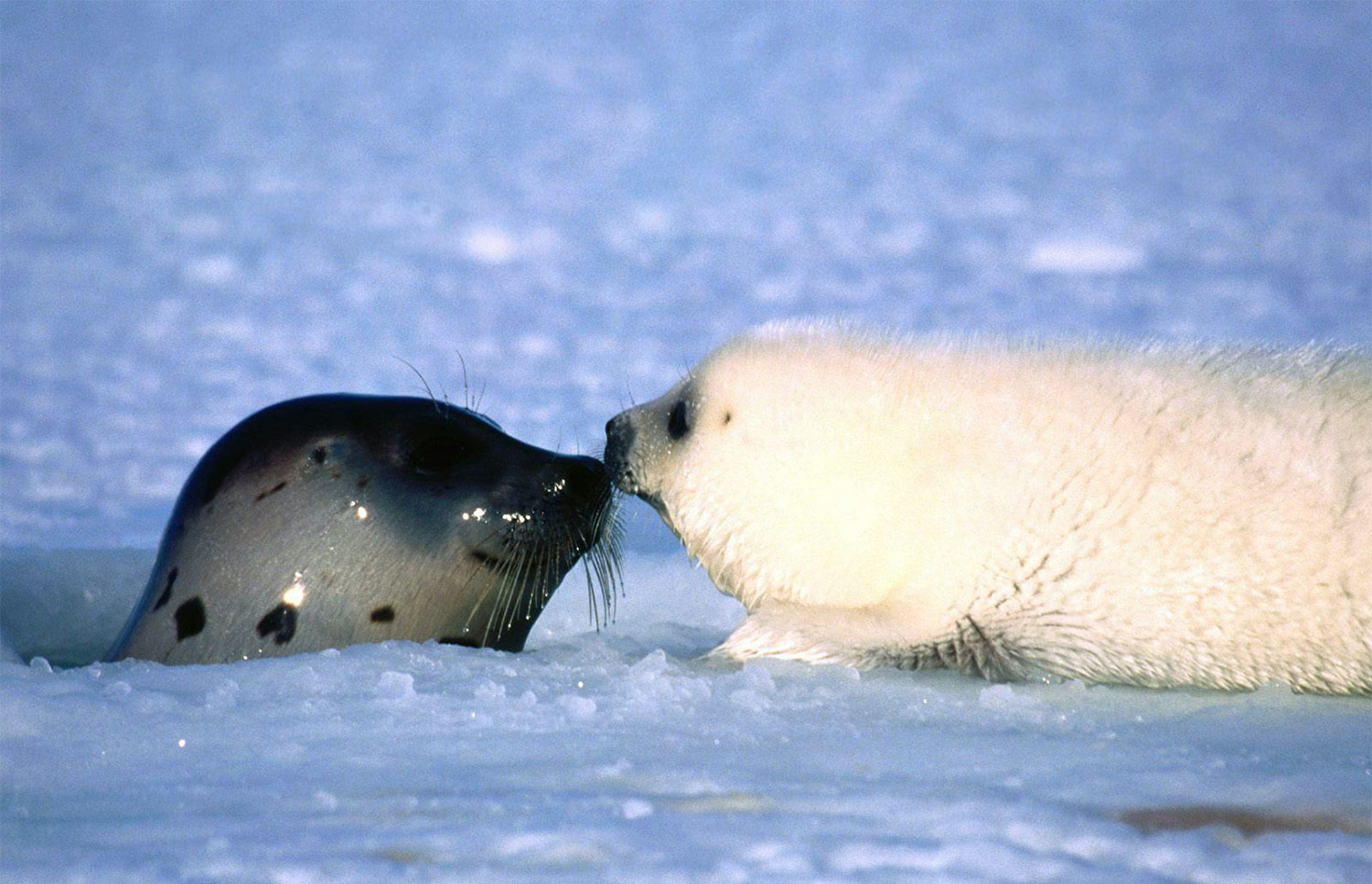
See

Experience the life of the harp seal on the North Atlantic and Arctic ice floes through these video clips and photographs.
Mother and Pup
Like all animals, including humans, baby harp seals are instinctively drawn to the security of their mothers. Harp seals give birth to only one pup at a time, so the bond between a mother and pup is very strong. Watch this clip of a harp seal pup chattering to its mother, who is dutifully keeping watch over her newborn.
Harp seal nursery
Harp seal mothers, who nurse their pups on the ice for nearly two weeks, do not eat during this time period and can lose up to 80 pounds. The pup gains about five pounds a day, nourished on her mother’s milk, which is nearly 50% fat. In this video by Humane Society International Canada, Director Rebecca Aldworth shows us touching footage of mother seals and their nursing pups on an ice floe in the Gulf of St. Lawrence.
Seal socialization
Harp seals enjoy each other’s company and live in small colonies, which are sometimes branches of larger colonies numbering in the thousands. In this video taken by IFAW, a small colony of harp seals socializes while lounging and frolicking together on a pristine ice floe off the coast of Newfoundland.
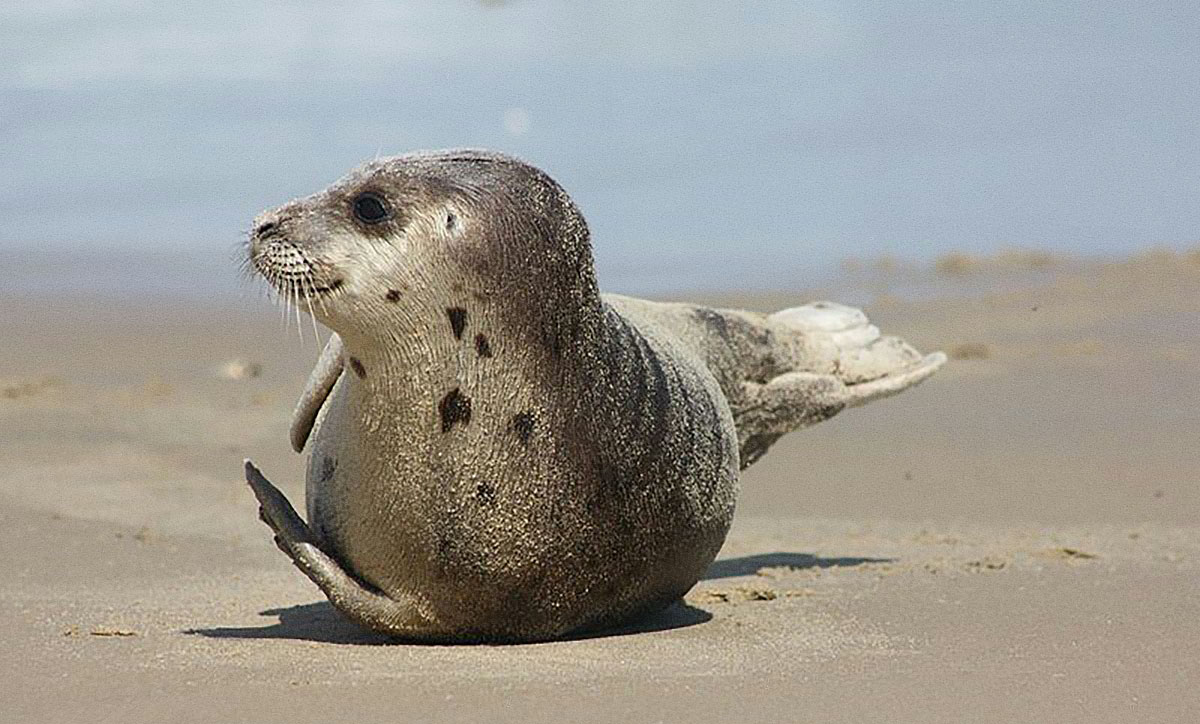
Interact

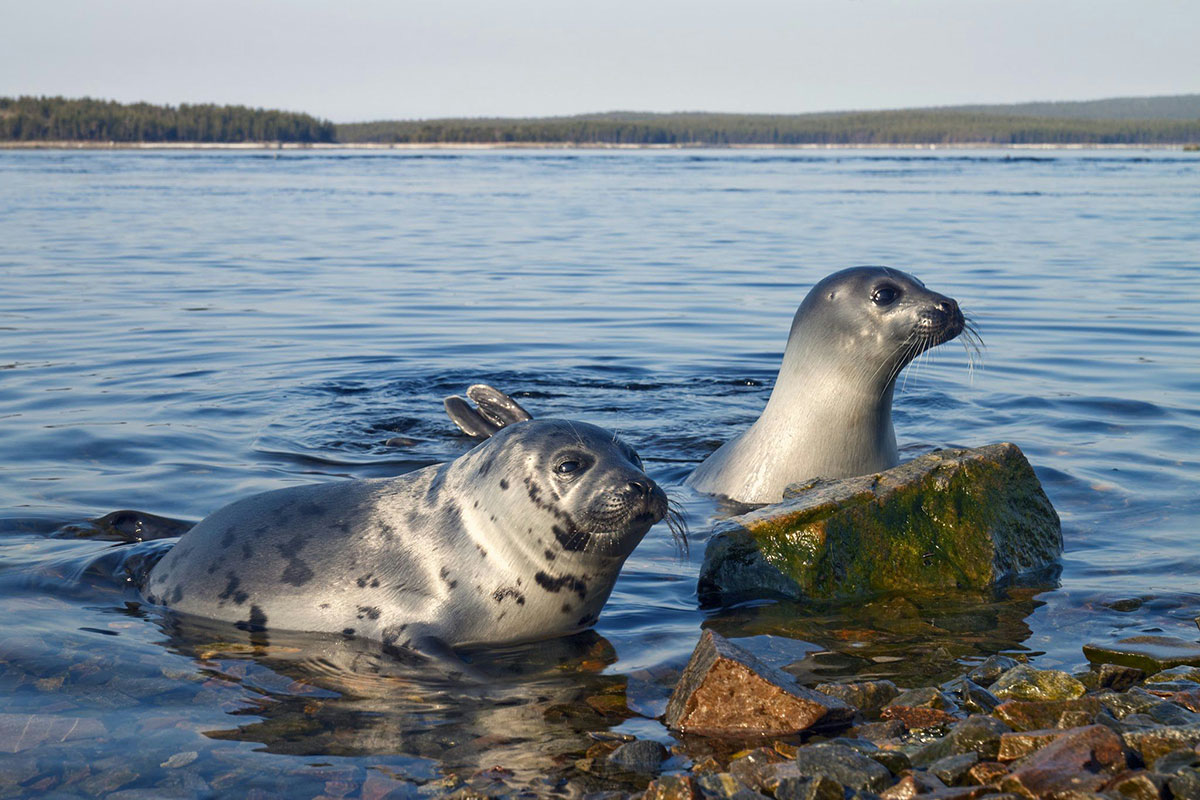
Even if you don’t live in Canada, you can still participate and help make a difference. Tell your friends, family, and communities about the horrific Canadian commercial sealing industry. The Sea Shepherd website has a fantastic page that gives suggestions on you can help end this industry wherever you may live. Most seal and marine mammal advocacy groups have social media accounts on Facebook and Twitter, where you can connect and help a dedicated community working on behalf of harp seals. The links for the social media accounts of these groups are listed below, as well as links to their individual websites.
Harp Seal Voices
Learn

Harpseals.org is a treasure trove of information about harp seals and the ongoing effort to close down the Canadian sealing industry. The site features numerous videos and photos and volumes of information about every facet of commercial sealing history. Also included on the site is up-to-date information on seal advocacy initiatives, public and celebrity support, and much more. It is a great resource for anyone researching the issue or wanting to learn about how they can join the effort to end the Canadian sealing industry. The dedicated harp seal webpages of Sea Shepherd, IFAW, and United States Humane Society are also great resources.
Harpseals.org is a treasure trove of information about harp seals and the ongoing effort to close down the Canadian sealing industry
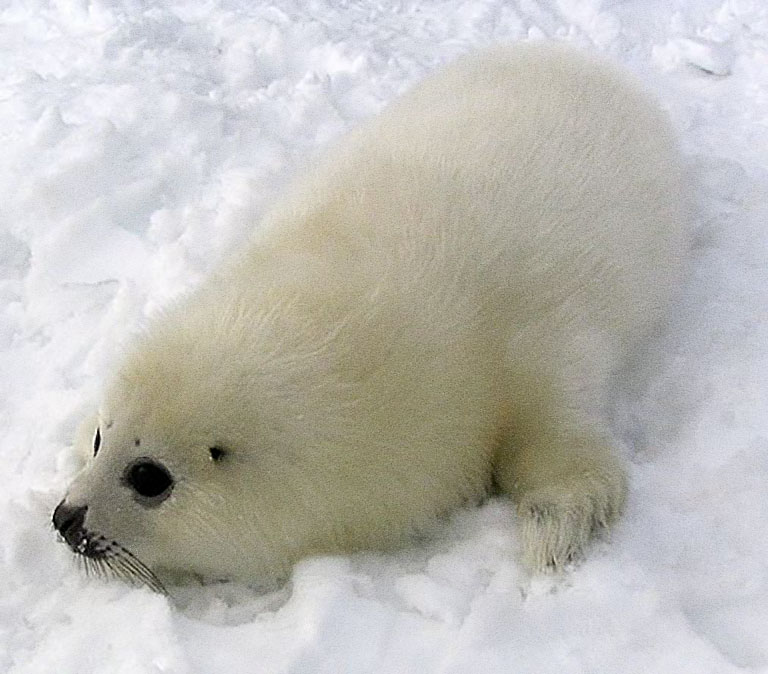
Watch

The following inspired documentaries and clips are fantastic resources for anyone wanting to dive deeper into the issue of the Canadian seal hunt. Some share detailed accounts of the horrors of the methods used in the hunt, others focus on the harp seals, while others are about the efforts being taken by animal advocacy groups to end the terrible industry.
Saving Seals: EcoTourists Guard Fluffy Wonders
A compelling 25-minute documentary produced by Russia Today exploring how some former Russian seal hunters have embraced eco-tourism after the 2011 Russian ban on seal products went into effect. It includes fascinating interviews with the men and their families along with a look at a new eco-tourist resort where former hunters now work.
IFAW: Seal Products
In this short video produced in 2012 on location in Newfoundland, Canada, International Fund for Animal Welfare (IFAW) seal program director Sheryl Fink talks about the recent history of harp seal products and the world’s lack of interest in purchasing them.
Brink
This short three minute video produced by the Weather Channel chronicles the work of Rebecca Aldworth and Humane Society International as they expose the horrors of the Canadian seal hunt to the rest of the world.
Seal Pup Goes for a Swim
A stunning 15 minute movie that reveals the intimate bond between a seal pup and his mother as two Weddell seals (cousin of the Harp seal) go for a swim under the ice floes of the Ross Sea in Antarctica.
Harp Seal
This short National Geographic video shows harp seals swimming and socializing in their natural habitat off the Canadian North Atlantic coast.
